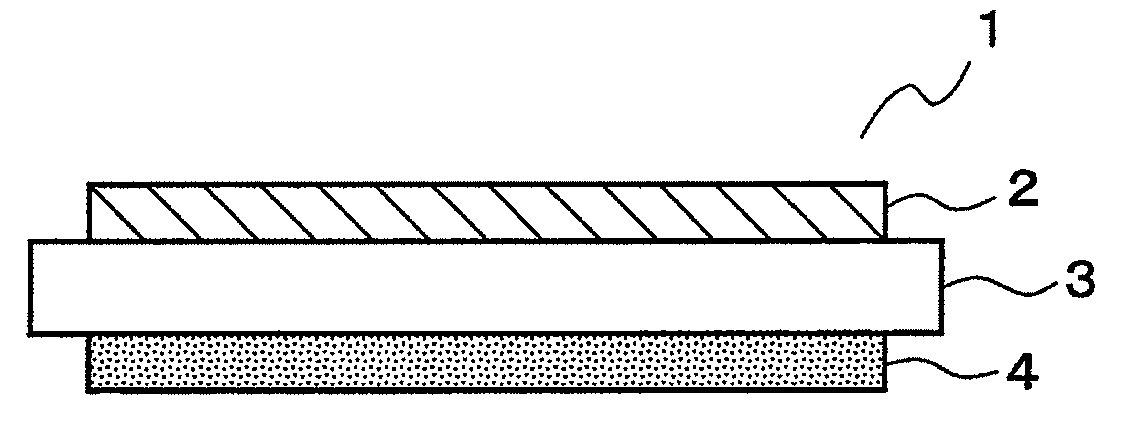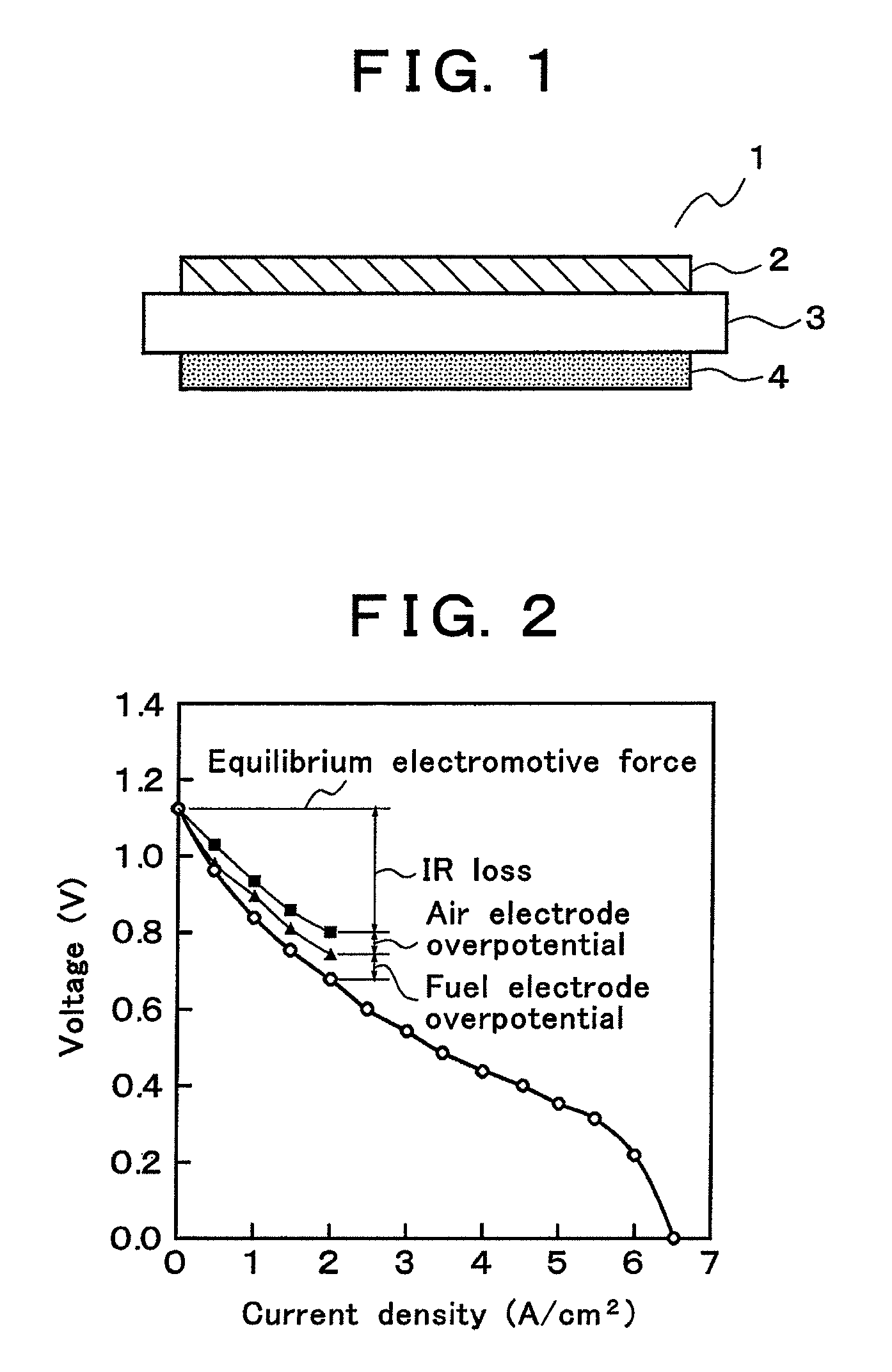Solid oxide fuel cell and manufacturing method thereof
a solid oxide fuel cell and manufacturing method technology, applied in the direction of cell components, final product manufacturing, sustainable manufacturing/processing, etc., can solve the problems affecting and unsuitable air electrodes. achieve the effect of reducing the overpotential of each electrode and improving the efficiency of electric power generation
- Summary
- Abstract
- Description
- Claims
- Application Information
AI Technical Summary
Benefits of technology
Problems solved by technology
Method used
Image
Examples
examples
Step 1: Fabrication of a Solid Electrolyte Layer
[0031]As source materials, La2O3, SrCO3, Ga2O3, MgO, and CoO were prepared, weighed out in predetermined amounts, subjected to mixing with the aid of a ball mill, heated in air at 1,200° C. for calcination, and additionally pulverized with the aid of a ball mill, and thus a lanthanum gallate based oxide powder was produced. The lanthanum gallate based oxide powder thus obtained was molded into a thin plate shape with the aid of a method well known in the art such as the doctor blade method and the like, and then heated at 1,450° C. in air; thus the solid electrolyte material plates (Examples 1 to 4) of the compositions and thickness values shown in Table 1 were manufactured.
Step 2: Production of the Fuel Electrode Layer
[0032]In each of the present Examples, the fuel electrode layer was produced by the spray thermal decomposition method described below.
[0033]Nickel nitrate, cerium nitrate and samarium nitrate were prepared, weighed out ...
PUM
| Property | Measurement | Unit |
|---|---|---|
| temperatures | aaaaa | aaaaa |
| voltage | aaaaa | aaaaa |
| voltage | aaaaa | aaaaa |
Abstract
Description
Claims
Application Information
 Login to View More
Login to View More - R&D
- Intellectual Property
- Life Sciences
- Materials
- Tech Scout
- Unparalleled Data Quality
- Higher Quality Content
- 60% Fewer Hallucinations
Browse by: Latest US Patents, China's latest patents, Technical Efficacy Thesaurus, Application Domain, Technology Topic, Popular Technical Reports.
© 2025 PatSnap. All rights reserved.Legal|Privacy policy|Modern Slavery Act Transparency Statement|Sitemap|About US| Contact US: help@patsnap.com


